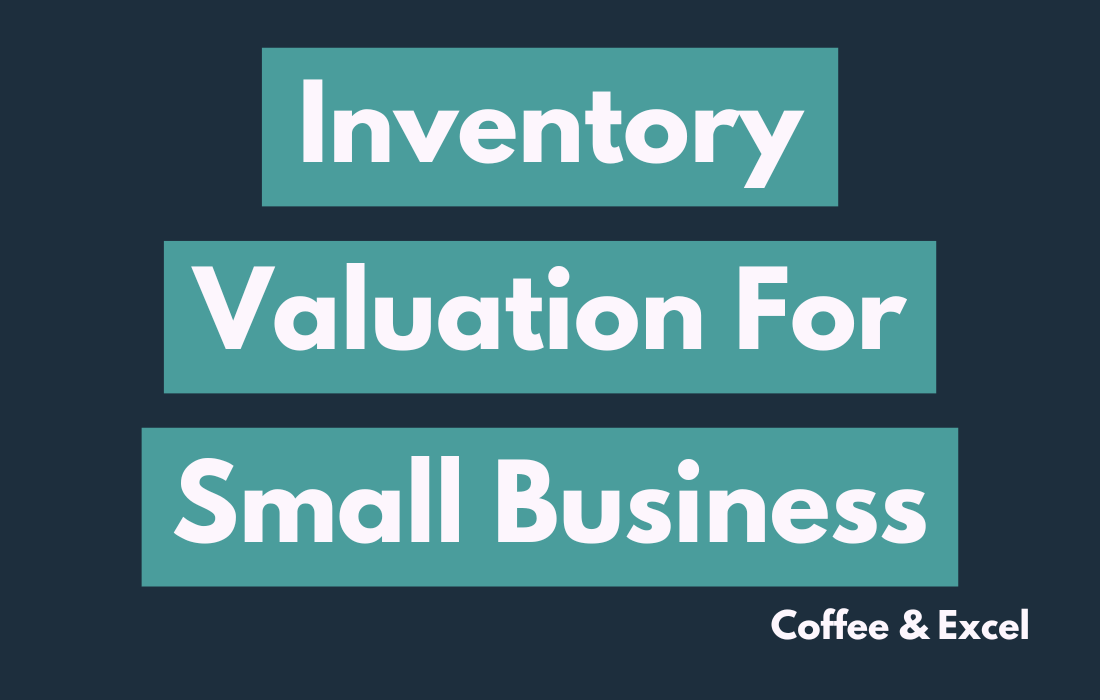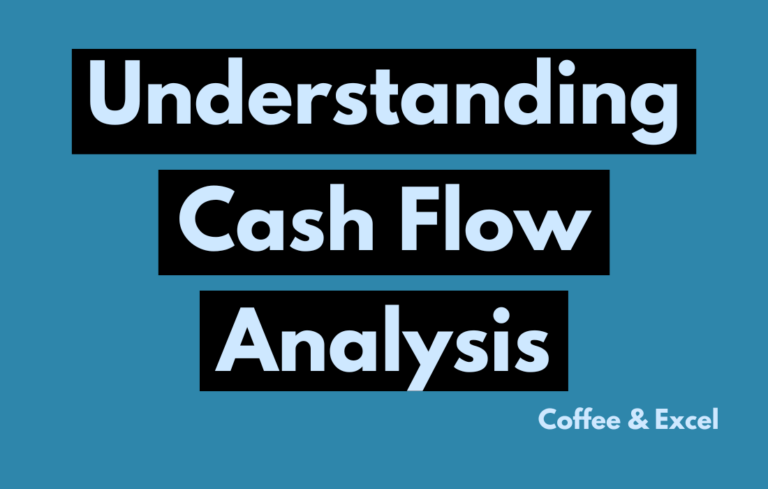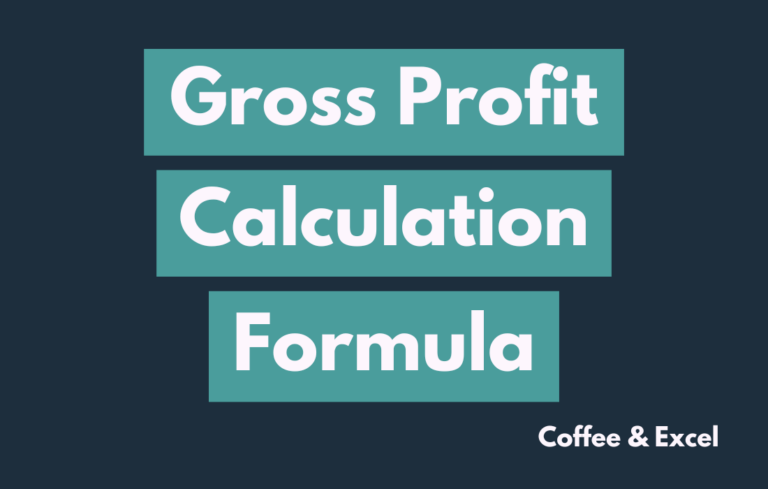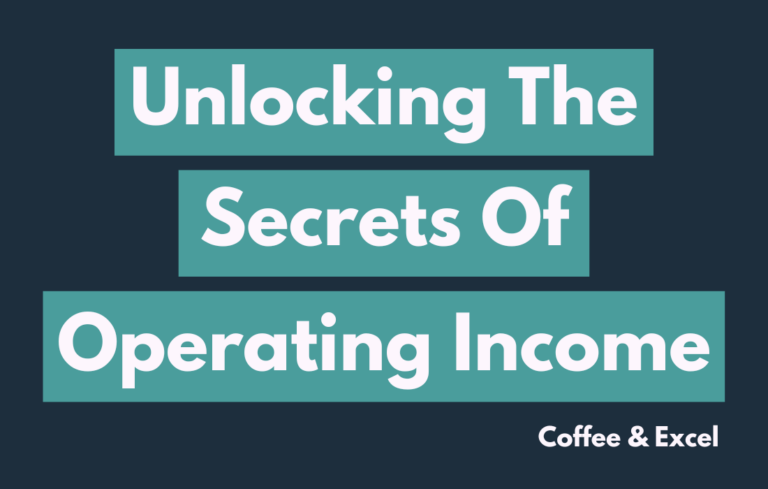Inventory Valuation for Small Businesses: Managing for Future Growth

Introduction: Unraveling the Mystique of Inventory Valuation
Why Talk About Inventory Valuation?
Every small business owner knows the importance of keeping track of their inventory. However, merely counting stock isn’t enough. Delving deeper, there’s a pivotal aspect that often gets overlooked: inventory valuation. At its core, inventory valuation isn’t just about numbers; it’s about understanding the true worth of your stock and how it shapes your financial landscape.
The Small Business Perspective
For small businesses, every penny counts. Consequently, understanding the value of your inventory becomes even more crucial. It’s not just about assessing your assets; it’s about making informed decisions, optimizing tax obligations, and painting an accurate picture of your business’s financial health.
Setting the Stage
In this guide, we’ll embark on a journey to demystify the concept of inventory valuation for small businesses. We’ll explore its significance, delve into the most popular valuation methods, and provide insights to help you make the best choices for your enterprise. So, buckle up and get ready to dive deep into the world of inventory valuation for small businesses!
Key Takeaways
- Inventory Valuation Defined: It’s the method businesses use to assign a monetary value to their stock, crucial for understanding financial health and tax implications.
- Importance for Small Businesses: Accurate inventory valuation affects profit margins, tax obligations, and provides a clear picture of a company’s financial standing.
- Common Valuation Methods: FIFO (First-In, First-Out), LIFO (Last-In, First-Out), Weighted Average Cost, and Specific Identification each have unique tax and financial implications.
- Choosing the Right Method: Consider factors like business model, industry standards, inventory turnover rate, and external economic conditions.
- Technology’s Role: Modern tools, like QuickBooks Commerce and NetSuite, automate and streamline the valuation process, ensuring accuracy and real-time data access.
- Common Mistakes: These include neglecting regular updates, overlooking shrinkage, and not factoring in all associated costs. Awareness and proactive management can prevent these pitfalls.
What is Inventory Valuation?
Decoding the Term
At its simplest, inventory valuation is the method businesses employ to assign a monetary value to their stock. But why does this matter? Imagine running a business without knowing the worth of your assets. It would be like sailing a ship without a compass. Inventory valuation acts as that compass, guiding businesses in understanding their financial position.
Beyond Simple Calculations
While it might seem like a straightforward calculation, inventory valuation goes beyond just multiplying quantities with costs. It’s a dynamic process, influenced by various factors such as market conditions, supply chain disruptions, and even seasonal trends. By valuing inventory accurately, businesses can ensure they’re neither overestimating nor underestimating their assets.
The Financial Statement Connection
Inventory valuation doesn’t operate in isolation. It plays a pivotal role in shaping a company’s financial statements. When you value your inventory, you’re directly impacting your balance sheet and profit & loss statement. Accurate valuation ensures that revenue, cost of goods sold (COGS), and profits are represented correctly, painting a true picture of a business’s financial health.
Why is Inventory Valuation for Small Businesses Important?
The Profit and Loss Puzzle
First and foremost, inventory valuation directly influences a business’s bottom line. When small businesses accurately value their inventory, they gain a clearer picture of their cost of goods sold (COGS). This, in turn, affects gross profit margins. For instance, undervaluing inventory might lead to a perceived higher profit, while overvaluing can result in seemingly lower profits. Thus, getting it right is paramount.
Tax Implications: More Than Meets the Eye
Next, let’s talk taxes. The value assigned to inventory can significantly sway a small business’s tax obligations. Higher inventory values can lead to higher reported assets and, consequently, potentially higher taxes. On the flip side, lower inventory values might reduce tax liabilities. Navigating this balance is crucial, as it can directly impact a business’s cash flow and financial stability. We will go into more detail later.
A Mirror to Business Health
Lastly, inventory valuation serves as a reflection of a business’s overall health and liquidity. Stakeholders, investors, and even potential partners often scrutinize inventory values to gauge the stability and growth potential of a small business. An accurately valued inventory can instill confidence, attract investment, and foster trust among business associates.
Common Methods of Inventory Valuation
Navigating the world of inventory valuation for small businesses, one quickly realizes there’s no one-size-fits-all approach. Different businesses have different needs, and consequently, various methods have emerged over time. Let’s delve into the most popular ones and understand their nuances.
First-In, First-Out (FIFO)
Starting with the FIFO method, it operates on a simple principle: the oldest inventory items are sold first, while the newest items remain in stock. Imagine a conveyor belt where products are lined up based on their arrival time; the first product that comes in is the first one to go out.
Pros and Cons for Small Businesses
For businesses with perishable goods, FIFO often makes the most sense. It ensures that older stock gets sold before it deteriorates. However, in times of inflation, using FIFO can result in higher taxes due to increased reported profits.
Last-In, First-Out (LIFO)
Switching gears to LIFO, this method assumes that the latest inventory items are the first to be sold. Picture a stack of books; you sell the top one (the last one added) before the ones beneath it.
Pros and Cons for Small Businesses
LIFO can be beneficial during inflationary periods, as it can lead to lower reported profits and, consequently, lower taxes. However, it might not be suitable for businesses dealing with perishable items, as older stock might get overlooked.
Weighted Average Cost
The weighted average cost method takes a balanced approach. It calculates an average cost for all inventory items based on their purchase costs and quantities. Every time a sale occurs, this average cost is used, regardless of the actual purchase date of the sold item.
Pros and Cons for Small Businesses
This method smoothens out price fluctuations, making it easier for businesses to predict their COGS. However, it can be more time-consuming to calculate, especially without automated systems.
Specific Identification
Lastly, the specific identification method is as direct as it sounds. Each inventory item is individually tracked and valued. Think of unique, high-value items like artwork or custom jewelry.
Pros and Cons for Small Businesses
Ideal for businesses with unique, non-interchangeable items, this method offers precise profit calculations. However, it’s labor-intensive and might not be feasible for businesses with vast, interchangeable stock.
Inventory Valuations: Useful Calculations
FIFO, LIFO, and Weighted Average Cost Calculations:
- FIFO: If you’re using the FIFO method, you’d sell the oldest items first. So, the cost of the oldest inventory would be used to determine the cost of goods sold (COGS).
- LIFO: For LIFO, you’d use the cost of the newest inventory to determine COGS.
- Weighted Average Cost: This is calculated by dividing the total cost of items available for sale by the total number of units available for sale.
Formula:
Weighted Average Cost per Unit = Total Cost of Items Available for Sale / Total Number of Units Available for Sale
Assume a business has the following inventory purchases:
- 100 units at $10 each
- 150 units at $12 each
And they sold 180 units.
FIFO – Using the FIFO method, the first 100 units sold would be valued at $10 each, and the next 80 units would be valued at $12 each.
COGS = (100 units x $10) + (80 units x $12) = $1000 + $960 = $1960
LIFO – Using the LIFO method, the first 150 units sold would be valued at $12 each, and the next 30 units would be valued at $10 each.
COGS = (150 units x $12) + (30 units x $10) = $1800 + $300 = $2100
Weighted Average Cost:
Total Cost = (100 units x $10) + (150 units x $12) = $1000 + $1800 = $2800
Total Units = 100 + 150 = 250
Weighted Average Cost per Unit = $2800 ÷ 250 = $11.20 per unit
COGS for 180 units = 180 units x $11.20 = $2016
Inventory Turnover Ratio:
Assume the following:
- COGS = $500,000
- Beginning Inventory = $100,000
- Ending Inventory = $150,000
Average Inventory = ($100,000 + $150,000) ÷ 2 = $125,000
Inventory Turnover Ratio = $500,000 ÷ $125,000 = 4
This means the business sold and replaced its inventory 4 times during the period.
Days Sales of Inventory (DSI):
Using the Inventory Turnover Ratio from the previous example:
Number of Days in Period (assuming a year) = 365 days
DSI = 365 days ÷ 4 = 91.25 days
This means, on average, it takes the business 91.25 days to sell its entire inventory.
Tax Implications of Inventory Valuation Methods
Understanding the tax implications of your chosen inventory valuation method is crucial for small businesses. Different methods can lead to variations in reported profits, which in turn can influence tax liabilities. Let’s delve into how each method can impact your tax obligations.
FIFO: Tax Impacts in Inflationary Times
During periods of inflation, when the cost of goods rises, FIFO can result in higher reported profits. This is because the oldest (and often cheapest) inventory is sold first. Consequently, businesses might find themselves with a higher tax liability due to increased taxable income.
LIFO: A Shield During Inflation
LIFO, on the other hand, can be a strategic choice during inflationary periods. As businesses sell their newest (and often more expensive) inventory first, reported profits might be lower. This can lead to reduced taxable income and, thus, potentially lower tax obligations.
Weighted Average Cost: Balancing the Scales
The weighted average cost method tends to smooth out the extremes. By averaging out costs, businesses might not see the dramatic fluctuations in reported profits as with FIFO or LIFO. This can lead to more consistent tax liabilities over time, making financial forecasting a tad easier.
Specific Identification: Tailored Tax Implications
For businesses using the specific identification method, tax implications can vary widely. Since each item is individually tracked, the tax impact depends on the specific costs of items sold during the tax period. This method offers flexibility but demands meticulous record-keeping.
How to Choose the Right Valuation Method for Your Business
Selecting the ideal inventory valuation method isn’t just about crunching numbers. It’s a strategic decision that can influence your business’s financial health, growth trajectory, and even its reputation. So, how do you make the right choice? Let’s explore the key considerations.
1. Understand Your Business Model: The Foundation of Choice
Firstly, take a moment to reflect on the nature of your business. Do you deal with perishable goods, or are your products long-lasting? A bakery might lean towards FIFO to ensure freshness, while a furniture store might opt for LIFO, especially if they stock items that don’t quickly go out of style.
2. Industry Standards Matter: Following the Leaders
Often, there’s wisdom in following the crowd, especially when it comes to industry standards. Observe your competitors and industry leaders. What methods are they employing? Adhering to industry norms simplifies decision-making and ensures you’re on par with market expectations.
3. Gauge Your Inventory Turnover Rate: The Speed of Sales
How quickly does your inventory move? If you have a high turnover rate, the differences between methods like FIFO and LIFO might be minimal. However, for businesses with slower-moving stock, the choice of valuation method can significantly impact financial statements.
4. Consider External Factors: The Bigger Picture
Lastly, don’t forget to factor in external elements. Are we in an inflationary or deflationary period? As we’ve seen, inflation can make LIFO more attractive due to its tax benefits. Conversely, during deflationary times, FIFO might be more advantageous.
The Role of Technology in Inventory Valuation
In today’s digital age, technology has seamlessly woven itself into the fabric of business operations, and inventory valuation for small businesses is no exception. With the rise of sophisticated tools and software, the once daunting task of inventory valuation has transformed into a streamlined process. Let’s delve into how technology is revolutionizing this domain and explore some leading software solutions in the market.
1. Automating Complex Calculations
Gone are the days when businesses had to rely solely on manual calculations and spreadsheets. Modern inventory valuation tools for small businesses automatically update values, factor in variables, and predict future trends. This saves time and minimizes human error, ensuring more accurate valuations.
2. Real-time Data Access: Stay Updated, Always
With cloud-based solutions, businesses can now access their inventory data in real-time, from anywhere. This constant connectivity allows for quicker decision-making, especially in fast-paced industries where stock levels and values can fluctuate rapidly.
3. Leading Software Solutions
QuickBooks Commerce, a favorite among small businesses, offers robust inventory management and valuation features. It integrates seamlessly with other accounting tools, making the entire financial management process more cohesive.
b. NetSuite
Oracle’s NetSuite is a comprehensive solution catering to a range of business needs, including inventory valuation. Its cloud-based platform ensures that businesses always have their finger on the pulse of their inventory’s worth.
Specifically designed for inventory management, Fishbowl Inventory boasts advanced valuation features. Its user-friendly interface and integration capabilities make it a popular choice among growing businesses.
Common Mistakes Small Businesses Make in Inventory Valuation and How to Avoid Them
Navigating the intricacies of inventory valuation, small businesses often stumble upon pitfalls that can skew their financial outlook. Recognizing these common mistakes and understanding how to sidestep them is crucial for maintaining an accurate financial perspective. Let’s shed light on these errors and offer solutions to steer clear of them.
Neglecting Regular Updates: The Peril of Stagnation
One of the most frequent missteps is failing to update inventory values regularly. As market conditions shift and product costs fluctuate, relying on outdated data can lead to significant discrepancies.
The Solution: Implement a routine inventory valuation schedule. Whether monthly, quarterly, or annually, consistent evaluations ensure that your figures remain relevant and accurate.
Overlooking Shrinkage or Spoilage: The Silent Eroders
Especially relevant for businesses dealing with perishable goods or fragile items, ignoring shrinkage (loss due to theft, miscounts, etc.) or spoilage can inflate inventory values.
The Solution: Regularly conduct physical inventory checks. Discrepancies can be identified and addressed promptly by comparing actual stock with recorded figures.
Not Factoring in All Associated Costs: The Hidden Expenses
Many businesses mistakenly consider only the purchase cost in their inventory valuation. However, costs like storage, insurance, and transportation also play a part in determining the true value of inventory.
The Solution: Adopt a holistic approach to valuation. Ensure that all associated costs, both direct and indirect, are factored into your inventory’s total value.
Case Study: A Shopify Store’s Journey with Inventory Valuation
Inventory valuation for small businesses is not just a theoretical concept; its practical implications can profoundly impact a business’s operations and profitability. To illustrate this, let’s dive into the real-life journey of “EcoTrend,” a Shopify online store specializing in sustainable fashion.
The Challenge: Navigating Rapid Growth
When EcoTrend first launched, their inventory was modest, and manual valuation seemed manageable. However, as their product range expanded and sales skyrocketed, the team quickly realized that their rudimentary spreadsheet system was no longer cutting it. Mistakes crept in, leading to discrepancies between actual stock and recorded inventory values.
The Shift to Automated Valuation: Embracing Shopify’s Tools
Recognizing the need for change, EcoTrend turned to Shopify’s built-in inventory management tools. These tools, designed to integrate seamlessly with the store’s operations, automated the valuation process, factoring in real-time sales, returns, and even promotional discounts.
The Results: Accuracy and Efficiency Combined
Post-implementation, EcoTrend witnessed a dramatic reduction in valuation errors. Not only did this enhance their financial accuracy, but it also streamlined their procurement process. With a clear understanding of their inventory’s value, they could make informed decisions about restocking, sales promotions, and even potential expansions.
Lessons Learned: The Power of Adaptability
EcoTrend’s journey underscores the importance of adaptability. While initial methods might serve a business at its inception, growth demands evolution. By recognizing challenges early on and leveraging the technological solutions at their disposal, EcoTrend ensured their inventory valuation was both accurate and efficient.
Frequently Asked Questions (FAQs) about Inventory Valuation for Small Businesses
1. What is inventory valuation?
Inventory valuation is the method businesses use to assign a monetary value to their stock. It’s essential for understanding a company’s financial position, impacting profit and loss statements, tax obligations, and overall business health.
2. Why is inventory valuation crucial for small businesses?
Inventory valuation for small businesses can directly affects profit margins, tax obligations, and provides insights into the company’s financial health. Accurate valuation ensures that revenue, cost of goods sold (COGS), and profits are represented correctly.
3. Which inventory valuation method is best for my business?
The ideal method depends on your business model, industry standards, inventory turnover rate, and external factors like inflation. For instance, businesses with perishable goods might prefer FIFO, while those in inflationary periods might lean towards LIFO.
4. How does technology aid in inventory valuation?
Modern technology offers tools and software that automate the inventory valuation process, ensuring real-time data access, accuracy, and efficiency. Examples include QuickBooks Commerce, NetSuite, and Fishbowl Inventory.
5. Are there tax implications for different inventory valuation methods?
Yes. Different methods can lead to variations in reported profits. For example, during inflation, FIFO might result in higher taxable income, while LIFO can offer reduced tax liabilities.
6. What common mistakes do businesses make in inventory valuation?
Common mistakes include neglecting regular updates, overlooking shrinkage or spoilage, and not factoring in all associated costs (like storage and transportation).
7. How did the Shopify store “EcoTrend” benefit from proper inventory valuation?
EcoTrend, a Shopify store, transitioned to automated inventory valuation using Shopify’s built-in tools. This shift led to a significant reduction in valuation errors, streamlined procurement, and enhanced financial accuracy.




